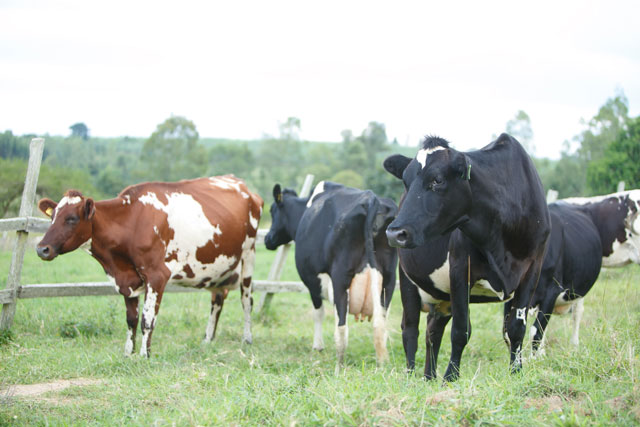
Kampala, Uganda | THE INDEPENDENT | Government has imposed a quarantine on five districts in southwestern Uganda following the new outbreak of the foot and mouth disease. The affected districts are Gomba, Isingiro, Kazo, Kiruhura and Sembabule where the disease has been detected in many herds.
Movement on livestock and livestock products into and out of these districts or through to other districts is immediately banned. Restrictions on the movement of livestock has also been imposed on another 24 districts including Kampala, Wakiso and Mukono which are named among the areas at a high risk of an outbreak.
The others include Kalungu, Kiboga, Kiryandongo, Kyankwanzi, Kyotera, Koboko, Mbarara, Lyantonde, Masindi, Nakaseke, Rakai, Nakasongola and Rubirizi. At risk districts are those bordering national parks as well as those along the transit routes used by livestock traders and exporters.
It is not known how many animals have been affected. But the Ministry of Agriculture, Animal Industry and Fisheries has procured 2.4 million dozes for the vaccination of livestock in these districts which is starting immediately, a program which will cost 13 billion Shillings.
The State Minister for Animal Husbandry Bright Rwamirama says selective vaccinations coupled with cross border and internal movement controls have previously proved effective.
Vaccination is free and compulsory according to the government, adding that he is already aware of the losses that the farmers are likely to incur by not selling their milk, beef, hides or live animals during the time of the quarantine.
Rwamirama says that the main reason Uganda has failed to completely eradicate the disease has to do with the indiscipline of the veterinarians, the farmers as well as the failure to harmonise measures with some neighbouring districts.
However, Medard Kakuru, a research analyst at Economic Policy Research centre says that while the approach of preventing and controlling FMD involving imposing quarantine restrictions, vaccination and sensitization is the most effective approach, the numbers matter.
“Indeed, these approaches are the most effective in the prevention and control of FMD. What is worrisome however is that despite the government adopting the recommended practices, FMD has remained uncontainable. Consequently, the quarantines are unending in some areas and take long to be lifted in other areas due to FMD re-occurrences”, he says.
Uganda has about 40 million livestock including 16 million goats, 15 million heads of cattle, 5.6 million sheep and 5 million swine. Kakuru notes that it might be too expensive for the government to vaccinate all the animals in the country, which a nationwide quarantine might also be too costly.
“Effective vaccination should cover at least 90 percent of the national herd and should be done before the onset of the disease, or at worst within the first two weeks after the onset,” he adds.
Foot-and-mouth disease (FMD) is a viral disease of cloven hoofed livestock and wildlife including cattle, goats, swine, sheep and buffalos. It has occurred several times in Uganda since 1953 when it was first confirmed. It is characterised by fever and blister-like sores on the tongue and lips, in the mouth, on the teats and between the hooves.
The disease causes severe production losses, and while the majority of affected animals recover, the disease often leaves them weakened and highly unproductive.
*****
URN
The post Gov’t quarantines five districts over foot and mouth disease appeared first on The Independent Uganda:.
from The Independent Uganda: https://ift.tt/3s0QtdA
0 Comments